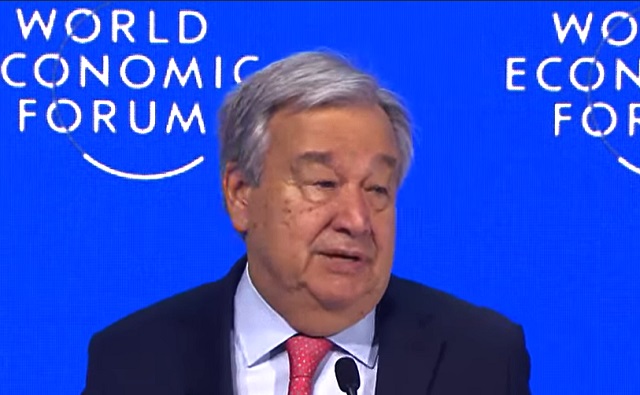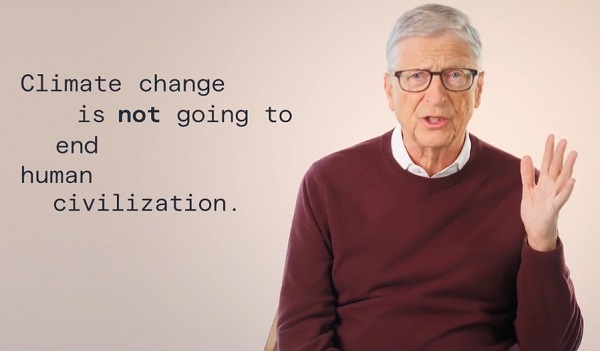Health
Euthanasia Prevention Coalition hopes to derail plan to offer euthanasia for people with mental illnesses

From LifeSiteNews
The Euthanasia Prevention Coalition is urging support for a campaign to reverse Canada’s decision allowing assisted suicide for those suffering with mental illness.
The Euthanasia Prevention Coalition needs your help to implement a successful campaign to reverse the decision to permit euthanasia for mental illness in Canada.
EPC has launched a petition to the justice minister and the justice critics demanding that the Canadian government reverse its decision to permit “MAiD” (Medical Assistance in Dying) for mental illness alone and demanding that Canadians with mental illness not be abandoned to death by euthanasia.
EPC has printed postcards (picture below) that can be ordered for free by calling: 1-877-439-3348 or emailing: [email protected].

EPC is also planning to release a video on euthanasia for mental illness soon.
Please consider making a donation towards the cost of this campaign here.
Background information
When the Canadian government expanded its euthanasia law (MAiD) in March 2021 (Bill C-7) it did so by removing the terminal illness requirement and permitting Canadians to be poisoned to death if they have an irremediable medical condition.
Bill C-7 also added the option of euthanasia for mental illness alone. Bill C-7 originally provided a two-year moratorium on euthanasia for mental illness to give them time to prepare for this expansion. In 2023 the government extended the moratorium for another year. Unless the government pauses its current plan, euthanasia for mental illness alone will become an option on March 17, 2024.
In February 2023, the Angus Reid Institute published a poll indicating that 31 percent of Canadians supported euthanasia for mental illness alone, with the highest support being in Quebec (36 percent) and the lowest support being in Saskatchewan (21 percent). In September 2023, the Angus Reid Institute conducted another poll which indicated that support for euthanasia for mental illness alone had dropped to 28 percent of Canadians.
Some real life stories
In August 2022, Global News reported the story of a Veterans Affairs employee who advocated euthanasia for a veteran living with PTSD. The article stated:
A Canadian Forces veteran seeking treatment for post-traumatic stress disorder and a traumatic brain injury was shocked when he was unexpectedly and casually offered medical assistance in dying by a Veterans Affairs Canada (VAC) employee, sources tell Global News.
Sources say a VAC service agent brought up medical assistance in dying, or MAID, unprompted in the conversation with the veteran. Global News is not identifying the veteran who was seeking treatment.
Canadians were shocked that a veteran who served the country and was seeking help for PTSD was offered (MAiD) euthanasia. The story was published around the same time as several other stories of people with disabilities who were approved for euthanasia based on poverty, homelessness, or being unable to obtain medical treatment.
The Tyee published in August 2023 the story of Kathrin Mentler (37) who lives with suicidal ideation. Mentler, who said that she has lived with depression, anxiety, and suicidal thoughts for many years, was offered euthanasia at the assessment centre at the Vancouver General Hospital when she was seeking help for suicidal ideation.
According to the article, Mentler went to the Vancouver General Hospital to receive help. The article states that she was told by the counsellor that the mental health system was “completely overwhelmed,” there were no available beds, and the earliest that she could talk with a psychiatrist was in about five months. The counsellor then asked Mentler if she had ever considered medically assisted suicide.
Canadians reacted strongly to the Mentler story as she was experiencing suicidal ideation and offered euthanasia while seeking a “safe place.” It must be noted that euthanasia for mental illness was technically illegal in June 2023 when it was offered as an option to Mentler.
An editorial published by the Globe and Mail on November 4, 2023, quoted Dr. K Sonu Gaind, chief of psychiatry at Sunnybrook Health Sciences Centre in Toronto, stating that there is “absolutely no consensus” as to what constitutes an irremediable medical condition when it comes to patients with mental illness. This comment is important because the law requires that a person to be approved for euthanasia, must have an irremediable medical condition.
There have been many articles in the media concerning people with disabilities who asked for or received euthanasia (MAiD) based on poverty, homelessness, or an inability to obtain medical treatment.
Similar to people with disabilities, people with mental health issues are more likely to live in poverty, to be homeless or to struggle to obtain the medical treatment that they need.
The battle to protect people with mental illness has not ended
On December 13 Justice Minister Arif Virani stated that the federal government may “pause its original plan” to permit euthanasia (MAiD) for mental illness.
Members of Parliament will have the opportunity to oppose euthanasia for mental illness when they return to Parliament after the Christmas break.
Members of Parliament need to reject euthanasia for mental illness.
Urge MPs not to abandon people with mental illness to death by MAiD.
Reprinted with permission from the Euthanasia Prevention Coalition.
Alberta
Alberta government’s plan will improve access to MRIs and CT scans

From the Fraser Institute
By Nadeem Esmail and Tegan Hill
The Smith government may soon allow Albertans to privately purchase diagnostic screening and testing services, prompting familiar cries from defenders of the status quo. But in reality, this change, which the government plans to propose in the legislature in the coming months, would simply give Albertans an option already available to patients in every other developed country with universal health care.
It’s important for Albertans and indeed all Canadians to understand the unique nature of our health-care system. In every one of the 30 other developed countries with universal health care, patients are free to seek care on their own terms with their own resources when the universal system is unwilling or unable to satisfy their needs. Whether to access care with shorter wait times and a more rapid return to full health, to access more personalized services or meet a personal health need, or to access new advances in medical technology. But not in Canada.
That prohibition has not served Albertans well. Despite being one of the highest-spending provinces in one of the most expensive universal health-care systems in the developed world, Albertans endure some of the longest wait times for health care and some of the worst availability of advanced diagnostic and medical technologies including MRI machines and CT scanners.
Introducing new medical technologies is a costly endeavour, which requires money and the actual equipment, but also the proficiency, knowledge and expertise to use it properly. By allowing Albertans to privately purchase diagnostic screening and testing services, the Smith government would encourage private providers to make these technologies available and develop the requisite knowledge.
Obviously, these new providers would improve access to these services for all Alberta patients—first for those willing to pay for them, and then for patients in the public system. In other words, adding providers to the health-care system expands the supply of these services, which will reduce wait times for everyone, not just those using private clinics. And relief can’t come soon enough. In Alberta, in 2024 the median wait time for a CT scan was 12 weeks and 24 weeks for an MRI.
Greater access and shorter wait times will also benefit Albertans concerned about their future health or preventative care. When these Albertans can quickly access a private provider, their appointments may lead to the early discovery of medical problems. Early detection can improve health outcomes and reduce the amount of public health-care resources these Albertans may ultimately use in the future. And that means more resources available for all other patients, to the benefit of all Albertans including those unable to access the private option.
Opponents of this approach argue that it’s a move towards two-tier health care, which will drain resources from the public system, or that this is “American-style” health care. But these arguments ignore that private alternatives benefit all patients in universal health-care systems in the rest of the developed world. For example, Switzerland, Germany, the Netherlands and Australia all have higher-performing universal systems that provide more timely care because of—not despite—the private options available to patients.
In reality, the Smith government’s plan to allow Albertans to privately purchase diagnostic screening and testing services is a small step in the right direction to reduce wait times and improve health-care access in the province. In fact, the proposal doesn’t go far enough—the government should allow Albertans to purchase physician appointments and surgeries privately, too. Hopefully the Smith government continues to reform the province’s health-care system, despite ill-informed objections, with all patients in mind.
Brownstone Institute
Bizarre Decisions about Nicotine Pouches Lead to the Wrong Products on Shelves

From the Brownstone Institute
A walk through a dozen convenience stores in Montgomery County, Pennsylvania, says a lot about how US nicotine policy actually works. Only about one in eight nicotine-pouch products for sale is legal. The rest are unauthorized—but they’re not all the same. Some are brightly branded, with uncertain ingredients, not approved by any Western regulator, and clearly aimed at impulse buyers. Others—like Sweden’s NOAT—are the opposite: muted, well-made, adult-oriented, and already approved for sale in Europe.
Yet in the United States, NOAT has been told to stop selling. In September 2025, the Food and Drug Administration (FDA) issued the company a warning letter for offering nicotine pouches without marketing authorization. That might make sense if the products were dangerous, but they appear to be among the safest on the market: mild flavors, low nicotine levels, and recyclable paper packaging. In Europe, regulators consider them acceptable. In America, they’re banned. The decision looks, at best, strange—and possibly arbitrary.
What the Market Shows
My October 2025 audit was straightforward. I visited twelve stores and recorded every distinct pouch product visible for sale at the counter. If the item matched one of the twenty ZYN products that the FDA authorized in January, it was counted as legal. Everything else was counted as illegal.
Two of the stores told me they had recently received FDA letters and had already removed most illegal stock. The other ten stores were still dominated by unauthorized products—more than 93 percent of what was on display. Across all twelve locations, about 12 percent of products were legal ZYN, and about 88 percent were not.
The illegal share wasn’t uniform. Many of the unauthorized products were clearly high-nicotine imports with flashy names like Loop, Velo, and Zimo. These products may be fine, but some are probably high in contaminants, and a few often with very high nicotine levels. Others were subdued, plainly meant for adult users. NOAT was a good example of that second group: simple packaging, oat-based filler, restrained flavoring, and branding that makes no effort to look “cool.” It’s the kind of product any regulator serious about harm reduction would welcome.
Enforcement Works
To the FDA’s credit, enforcement does make a difference. The two stores that received official letters quickly pulled their illegal stock. That mirrors the agency’s broader efforts this year: new import alerts to detain unauthorized tobacco products at the border (see also Import Alert 98-06), and hundreds of warning letters to retailers, importers, and distributors.
But effective enforcement can’t solve a supply problem. The list of legal nicotine-pouch products is still extremely short—only a narrow range of ZYN items. Adults who want more variety, or stores that want to meet that demand, inevitably turn to gray-market suppliers. The more limited the legal catalog, the more the illegal market thrives.
Why the NOAT Decision Appears Bizarre
The FDA’s own actions make the situation hard to explain. In January 2025, it authorized twenty ZYN products after finding that they contained far fewer harmful chemicals than cigarettes and could help adult smokers switch. That was progress. But nine months later, the FDA has approved nothing else—while sending a warning letter to NOAT, arguably the least youth-oriented pouch line in the world.
The outcome is bad for legal sellers and public health. ZYN is legal; a handful of clearly risky, high-nicotine imports continue to circulate; and a mild, adult-market brand that meets European safety and labeling rules is banned. Officially, NOAT’s problem is procedural—it lacks a marketing order. But in practical terms, the FDA is punishing the very design choices it claims to value: simplicity, low appeal to minors, and clean ingredients.
This approach also ignores the differences in actual risk. Studies consistently show that nicotine pouches have far fewer toxins than cigarettes and far less variability than many vapes. The biggest pouch concerns are uneven nicotine levels and occasional traces of tobacco-specific nitrosamines, depending on manufacturing quality. The serious contamination issues—heavy metals and inconsistent dosage—belong mostly to disposable vapes, particularly the flood of unregulated imports from China. Treating all “unauthorized” products as equally bad blurs those distinctions and undermines proportional enforcement.
A Better Balance: Enforce Upstream, Widen the Legal Path
My small Montgomery County survey suggests a simple formula for improvement.
First, keep enforcement targeted and focused on suppliers, not just clerks. Warning letters clearly change behavior at the store level, but the biggest impact will come from auditing distributors and importers, and stopping bad shipments before they reach retail shelves.
Second, make compliance easy. A single-page list of authorized nicotine-pouch products—currently the twenty approved ZYN items—should be posted in every store and attached to distributor invoices. Point-of-sale systems can block barcodes for anything not on the list, and retailers could affirm, once a year, that they stock only approved items.
Third, widen the legal lane. The FDA launched a pilot program in September 2025 to speed review of new pouch applications. That program should spell out exactly what evidence is needed—chemical data, toxicology, nicotine release rates, and behavioral studies—and make timely decisions. If products like NOAT meet those standards, they should be authorized quickly. Legal competition among adult-oriented brands will crowd out the sketchy imports far faster than enforcement alone.
The Bottom Line
Enforcement matters, and the data show it works—where it happens. But the legal market is too narrow to protect consumers or encourage innovation. The current regime leaves a few ZYN products as lonely legal islands in a sea of gray-market pouches that range from sensible to reckless.
The FDA’s treatment of NOAT stands out as a case study in inconsistency: a quiet, adult-focused brand approved in Europe yet effectively banned in the US, while flashier and riskier options continue to slip through. That’s not a public-health victory; it’s a missed opportunity.
If the goal is to help adult smokers move to lower-risk products while keeping youth use low, the path forward is clear: enforce smartly, make compliance easy, and give good products a fair shot. Right now, we’re doing the first part well—but failing at the second and third. It’s time to fix that.
-

 espionage22 hours ago
espionage22 hours agoU.S. Charges Three More Chinese Scholars in Wuhan Bio-Smuggling Case, Citing Pattern of Foreign Exploitation in American Research Labs
-

 Daily Caller2 days ago
Daily Caller2 days agoUS Eating Canada’s Lunch While Liberals Stall – Trump Admin Announces Record-Shattering Energy Report
-

 Business1 day ago
Business1 day agoU.S. Supreme Court frosty on Trump’s tariff power as world watches
-

 Energy2 days ago
Energy2 days agoEby should put up, shut up, or pay up
-

 Justice1 day ago
Justice1 day agoCarney government lets Supreme Court decision stand despite outrage over child porn ruling
-

 Business12 hours ago
Business12 hours agoHere’s what pundits and analysts get wrong about the Carney government’s first budget
-

 Business2 days ago
Business2 days agoThe Liberal budget is a massive FAILURE: Former Liberal Cabinet Member Dan McTeague
-

 Daily Caller1 day ago
Daily Caller1 day agoUN Chief Rages Against Dying Of Climate Alarm Light








